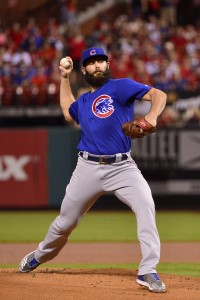Seven-time All-Star closer Craig Kimbrel entered the winter as the undisputed No. 1 reliever available in free agency, but it’s not as easy to identify the second-best option on the open market. When the offseason commenced, MLBTR’s Tim Dierkes, Steve Adams and Jeff Todd lumped four relievers close together behind Kimbrel in terms of projected earning power. They forecast that Jeurys Familia, David Robertson and Zach Britton would each earn three-year, $33MM contracts, while Adam Ottavino would come in a bit behind at three years and $30MM. Familia’s now off the board, having rejoined the Mets on a three-year, $30MM guarantee, while fellow bullpen arms Andrew Miller, Joe Kelly and Joakim Soria have also received lucrative contracts.
With Familia, Miller, Kelly and Soria no longer in the free-agent mix, it’s clear that Robertson, Britton and Ottavino are the most desirable non-Kimbrel relievers without teams. There has been widespread interest in all three over the past couple months, with some of the same clubs in contention for multiple members of the group. But who’s the most appealing hurler among the trio?
Perhaps the answer is the right-handed Robertson, who has put together nine straight highly productive seasons of 60-plus innings. Undoubtedly one of the most durable and effective relievers in recent memory, the longtime Yankee is coming off a season in which he logged a 3.23 ERA/2.97 FIP with 11.76 K/9, 3.36 BB/9 and a 45.3 percent groundball rate across a career-best 69 2/3 innings. Never one to rely on high-90s velocity, Robertson continued to confound hitters with his breaking stuff, as FanGraphs rated his curve as the most valuable pitch of its kind among 2018 relievers. Batters posted a dreadful .196 weighted on-base average against that pitch and an even worse .145 mark when he threw his slider, according to Statcast.
If there’s one concern with Robertson, it’s his age. He’s set to turn 34 in April, meaning it’s fair to wonder whether he’ll continue to thrive over the course of a multiyear deal. Britton, meanwhile, is three years younger, having turned 31 on Dec. 22. Aside from Kimbrel, Britton likely had the best peak of anyone in this winter’s class of free-agent relievers. The left-hander amassed anywhere from 65 2/3 innings to 76 1/3 in each season as the Orioles’ closer between 2014-16, a three-year span in which he converted 120 of 128 save opportunities, led relievers in groundball rate (77.9 percent), placed second in ERA (1.38) and recorded 9.26 K/9 against 2.37 BB/9.
Britton was close to infallible during his heyday, but he fell off between 2017-18, when forearm, knee and Achilles injuries limited him to 78 innings. Britton still managed a terrific 3.00 ERA and a fantastic 72.8 percent grounder rate in that period, which he spent with the O’s and Yankees. His K/9 (7.27) and BB/9 (4.5) each went in the wrong direction, though, and his power sinker wasn’t as imposing.
Unlike Robertson and Britton, Ottavino brings little game-ending experience to the table, evidenced by his 17 career saves. He’s also a onetime Tommy John surgery patient and a 33-year-old whose career with the Cardinals and Rockies hasn’t been all that consistent. The righty has put together a handful of outstanding seasons and a few poor campaigns, though it seems he found another gear in 2018. After a woeful 2017 in Colorado, Ottavino spent last offseason working to improve his command in his native New York City, as former FanGraphs writer Travis Sawchik detailed in May, and the results were astounding.
Using primarily sliders and sinkers, Ottavino pitched to a 2.43 ERA/2.74 FIP with 12.98 K/9 and 4.17 BB/9 across a personal-best 77 2/3 frames last season. In the process, his first-pitch strike rate increased nearly 14 percent from 2017 and his out-of-zone swing rate climbed by almost 5 percent. Further, as Mike Petriello of MLB.com pointed out in October, Ottavino was a soft-contact wiz in 2018, trailing only all-world relievers Edwin Diaz and Blake Treinen in xwOBA against (.229; Robertson’s was .276, while Britton checked in at .311).
Although it’s obvious that Ottavino’s career has been less impressive than those of Robertson and Britton, it’s possible he’s the best of the three right now. Cases could be made for both Robertson and Britton, however, and it’ll be interesting to see how much guaranteed money these three high-end relievers ultimately receive in the coming weeks. Which one would you sign?
(poll link for app users)




